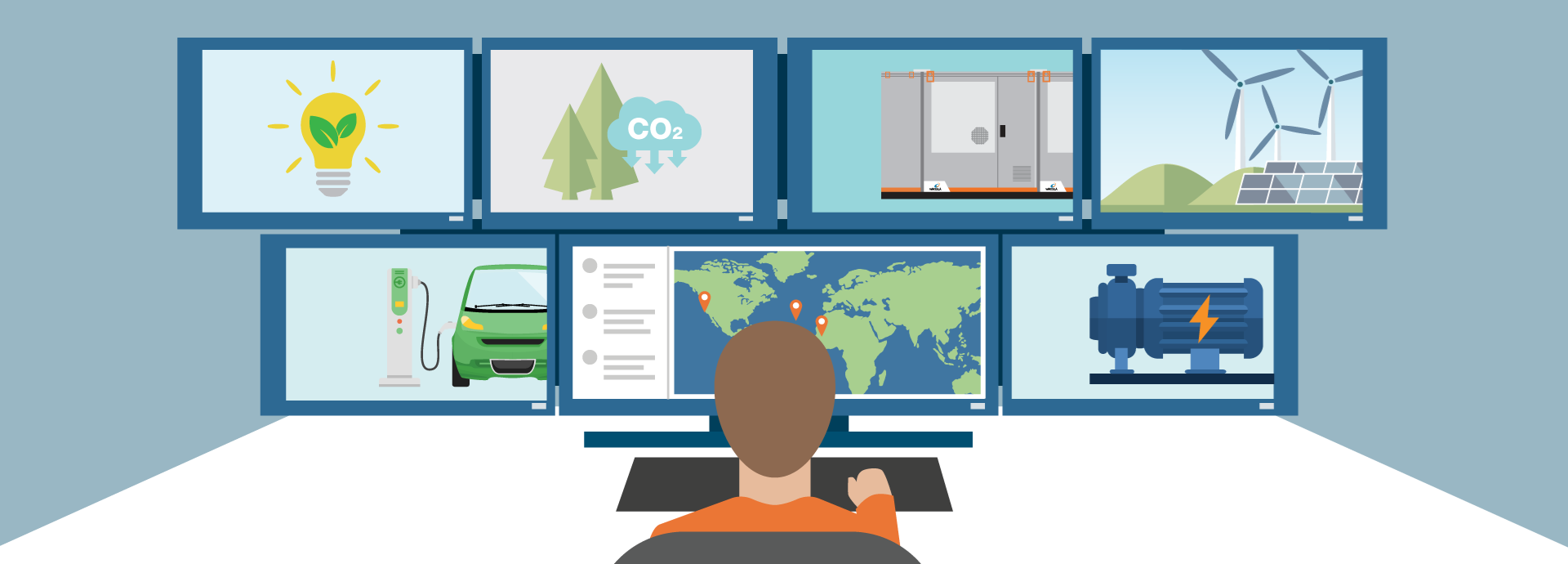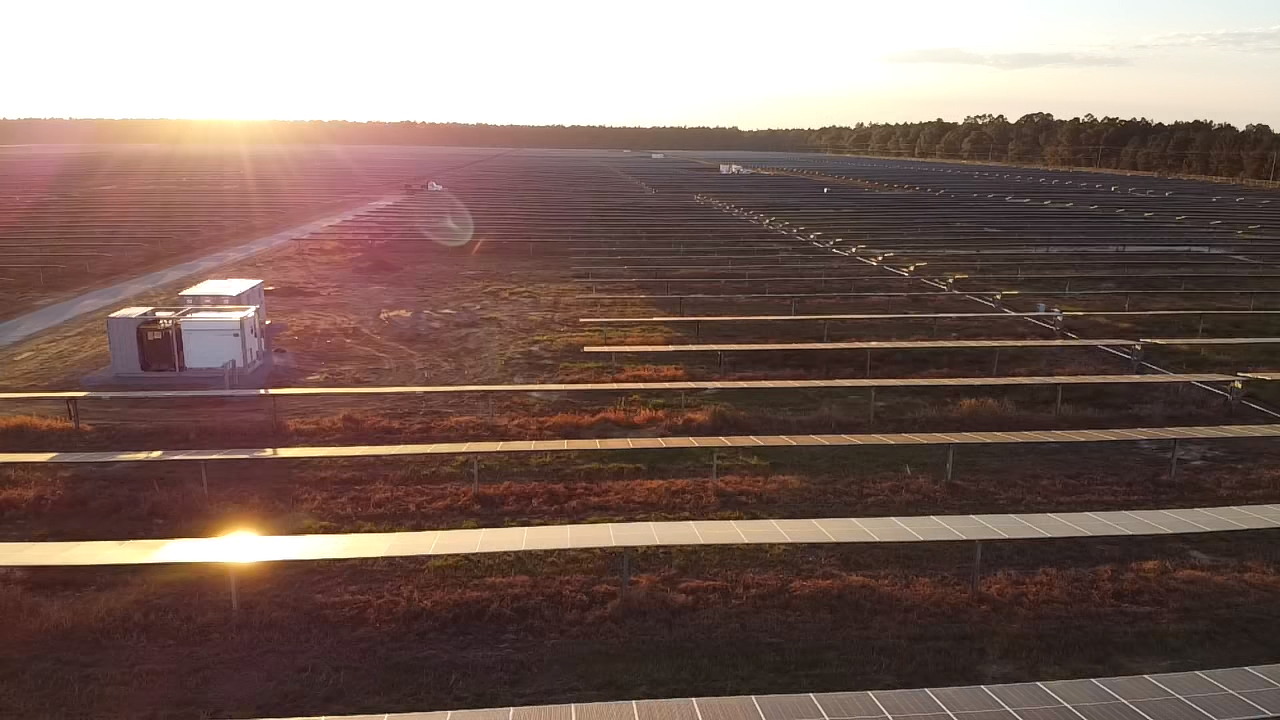

The economics of solar-plus-storage systems in energy production continue to improve around the world. Even still, there are some lesser-known hardware and software strategies that can be deployed to significantly increase revenues.
As the collocation of energy storage with renewable energy becomes universal, power producers are looking for creative ways to harness greater efficiency and sell into new energy markets to increase the value of their assets.
Pairing solar with energy storage becomes a global standard
According to a new report by Clean Horizon, an energy storage consultancy, there are more renewables-plus-storage projects than standalone energy storage systems across the globe. Renewables-plus-storage projects account for the majority of storage capacity in emerging markets including Africa, Australia and South America. In the United States, the largest market for energy storage worldwide, 58% of deployed storage capacity is collocated with solar. In fact, most of the large-scale energy storage systems expected to come online in the U.S. over the next three years will be collocated with solar. Europe is the exception to this trend - 85% of energy storage projects are standalone, due to project economics and restrictions around collocated battery use for ancillary services.
By itself, solar is non-dispatchable, requires ramp up and ramp down generation elsewhere on the grid, and needs flexible resources to fill in intermittency and variability of power output. But when paired with solar, energy storage guarantees that reliable renewable power is readily available, complemented with balancing engines to ensure the system is optimised.
Improved economics of solar-plus-storage systems are seen around the world.
The cost of energy generation from a solar-plus-storage facility has been declining rapidly around the world in recent years. On average, the cost has dropped from over 350 USD per megawatt-hour (MWh) in 2015 to less than 60 USD per MWh for projects expected to be commissioned beyond 2022. Plus, improvements in photovoltaic (PV) panel efficiency and availability of larger panels have significantly increased the power and energy density of utility-scale solar plants over the past decade. According to a study in the Institute of Electrical and Electronics Engineers Journal of Photovoltaics, median power densities in 2019 were 52% higher for fixed-tilt plants and 43% higher for tracking plants than in 2011. Meanwhile, median energy densities rose 33% for fixed-tilt plants and 25% for tracking plants over this same period. As cost reductions and output improvements continue, solar-plus-storage systems will continue to become more competitive on a levelised cost of energy (LCOE) basis in comparison to conventional resources.
System efficiency starts with design
About 99% of all solar-plus-storage facilities globally are AC-coupled, where the battery system and PV plant are connected to separate inverters in parallel. But by reducing the number of AC/DC conversions in a solar-plus-storage system, power producers can reduce inefficiencies and improve revenues.
With DC-coupled solar-plus-storage systems, solar generation flows directly to the battery, via a cost-efficient DC/DC converter, and avoids conversion losses from an inverter. As a result, DC-coupled systems are 3% more efficient than AC-coupled systems. Plus, the DC/DC converter that creates compatibility between the PV panels and the battery is less expensive than purchasing a second inverter needed for AC-coupled systems. This translates to both lower capital expenditure and installation costs.
However, there are some applications where AC-coupling remains the most cost-effective strategy. For example, AC-coupling is more appropriate for large solar plants collocated with small energy storage systems because the energy being stored will be highly impacted by efficiency losses. Additionally, if the same battery is going to be used by other generation sources, DC-coupling would increase efficiency losses due to the impact of power flows at the AC/DC conversion stage. Power producers should also be aware that DC-coupled systems typically do not satisfy contractual obligations in some regions requiring a clear demarcation between the metering of solar panels and the battery.
DC-coupling is especially useful for making energy shifting, one of the most popular use cases of solar-plus-storage projects, more profitable. DC-coupling allows power producers to avoid production curtailment by storing power that would otherwise be “clipped” in the battery. To maximise plant productivity, the amount of PV panels deployed is always higher than the rating of the AC/DC inverters. When maximum power is reached on AC-coupled systems, the surplus of the production energy over the inverter threshold is lost. But with DC-coupled systems, the “clipped” energy can easily be stored in the battery.

By storing solar energy directly in the battery, project owners can generate additional revenue by selling power to the grid at night by discharging the battery. Applications like energy shifting, in which the batteries are charged and discharged frequently, benefit the most from the minimal efficiency losses that DC-coupling provides, compared to a direct consumption application.
The trend toward DC-coupled systems pairs well with a growing preference within the industry for prefabricated modular battery enclosures. Modular energy storage systems are highly optimised for DC-coupled systems since the battery can be connected to the inverters that are distributed across the entire PV field rather inexpensively, compared to standard 40-ft containers.
Demand for modular systems is growing for both DC- and AC-coupled systems, and for good reason - modular battery design can significantly reduce labor and equipment costs. With prefabricated modular systems, batteries are loaded into modules at the manufacturing facility. Unlike container-based solutions, where equipment is installed in the field.
Greater complexity means demand for smart controls
Greater system efficiencies translate into greater energy yield. As new energy markets emerge, those yields can become new sources of revenue. However, the future of solar-plus-storage is more than just hardware; software optimisation is a critical next step to ensure utility-scale storage systems coupled with renewables are fully optimised.
Smart energy management systems can support a variety of applications to maximise the value of the energy produced by the power plant. Leveraging weather, use-case, historical system performance and battery data, energy management software can forecast how much power an adjoining plant will produce and take advantage of and balance for price variations, among other insights.
The ability to manage complexity is of the utmost importance when new system designs are implemented. DC-coupled systems are inherently more complex and require additional, although less expensive, components than AC-coupled systems. Software is needed to orchestrate the operation of both the PV inverter and DC/DC converter and ensure compatibility to provide the desired outcome for the plant operator.
Wärtsilä recently commissioned a 40 MW / 80 MWh solar-plus-storage facility in Georgia, USA, which serves as a great example of this co-optimisation between hardware and software. The DC-coupled design increases energy delivery during peak demand times and enables RWE Renewables to sell nearly 200 MW of solar generation onto the grid.
The facility, however, takes project optimisation a step further. Wärtsilä’s sophisticated GEMS Digital Energy Platform controls the entire hybrid plant while its new cloud-based IntelliBidder software automatically bids firm energy into the day-ahead markets. IntelliBidder leverages machine learning and optimisation algorithms based on automated and forecasted data and real-time trading for elevated value-based asset management and portfolio optimisation.
Due to the increased penetration of clean power and trends in mass electrification, including the anticipated surge in electric vehicles, it’s critical for energy and solution providers to continue to innovate to meet demand while ensuring grid reliability and affordable power prices. There is significant opportunity for power producers to save resources by implementing optimisation strategies, and ultimately benefit the bottom line. DC-coupling, modular design, and energy management software are key optimisation strategies we are confident will continue to generate meaningful returns for power producers..
The article was originally published in Energy Industry Times in February 2022, adapted here.
Did you like this? Subscribe to Insights updates!
Once every six weeks, you will get the top picks – the latest and the greatest pieces – from this Insights channel by email.


